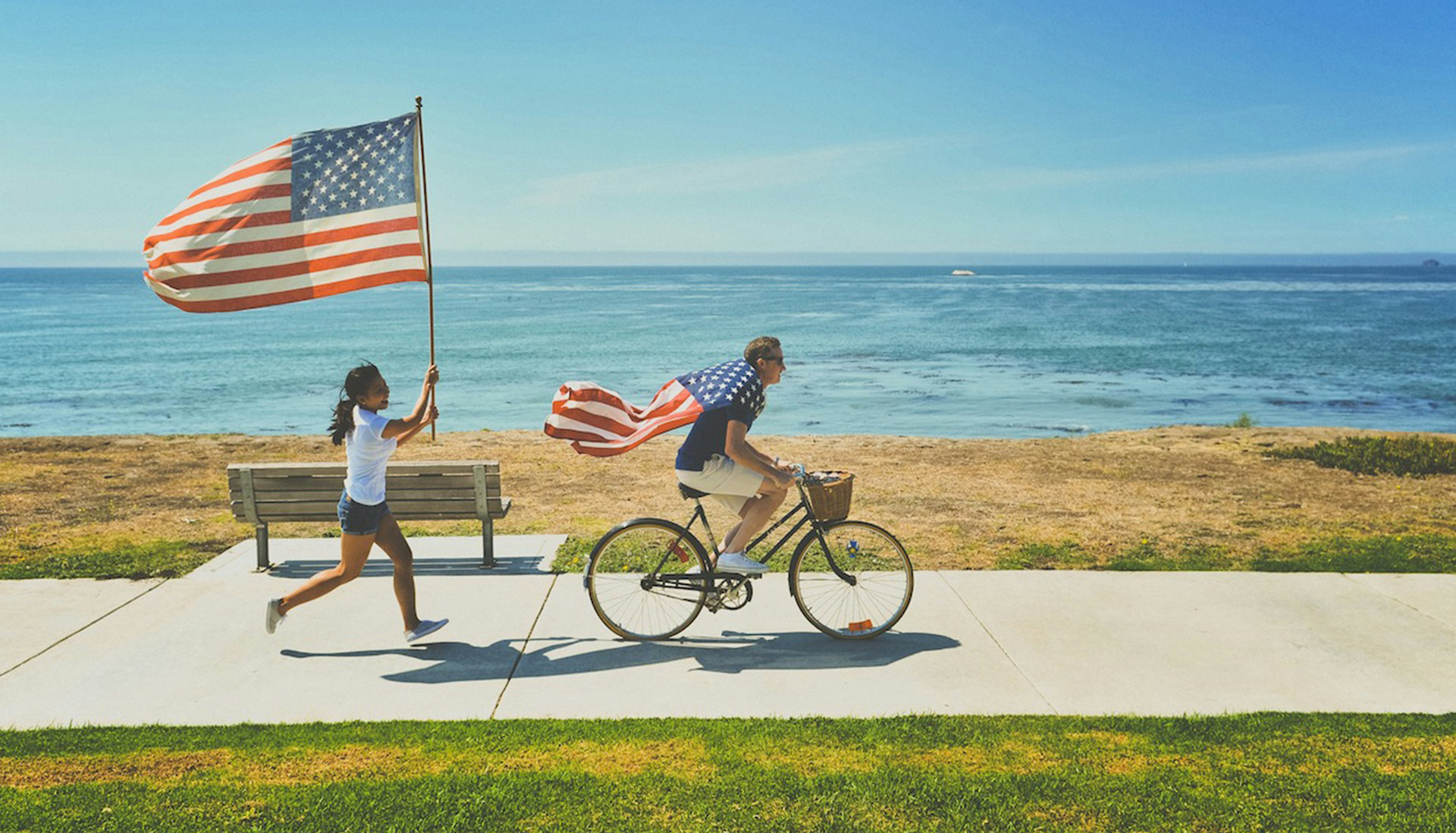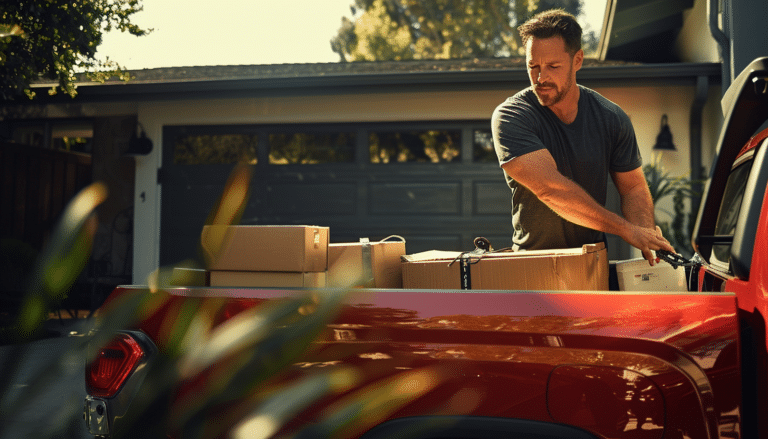Using Retractable Ratchet Straps for July 4 Weekend Getaways
Discover how these cargo-securing tools can make your Independence Day adventures more enjoyable.

The 4th of July weekend is a prime time for outdoor adventures, and whether you’re heading to the mountains, the beach, or a favorite camping spot, securing your gear safely is of utmost importance. One of the most reliable tools for this job is retractable ratchet straps. These handy devices, also called retractable tie-down straps, ensure your load stays put during transit, preventing any mid-journey mishaps that could spoil your holiday fun.
Today’s article explores essential tips for using retractable straps to make your weekend getaway as smooth and enjoyable as possible.
Why Choose Retractable Ratchet Straps?
Retractable tie-down straps offer convenience and reliability that traditional straps can’t match. These innovative tools automatically wind up into a compact, easy-to-store housing, eliminating tangled messes and ensuring a quick, hassle-free setup. Made from high-strength materials, they provide the perfect balance of flexibility and durability, ideal for securing loads of various sizes and weights.
Selecting the Right Straps for Your Needs
Choosing the right tie-downs depends on the type and size of the load you need to secure. Here’s what you need to consider:
Weight Capacity: Ensure the straps can handle the combined weight of your gear. Check the manufacturer’s specifications for maximum load limits, often called the Working Load Limit (WLL) and the Breaking Strength.
Length and Width: Longer and wider straps offer greater holding power and are suited for larger items like ATVs and UTVs. Shorter and narrower straps are sufficient for smaller gear, such as bikes or general cargo.
Material: Look for straps made of high-quality polyester, known for their strength and resistance to abrasion and UV rays. This ensures longevity and reliability, even under harsh outdoor conditions.
Preparing Your Load
Before securing your gear, take the time to organize and prepare it properly. Doing so ensures your belongings’ safety and smoother the loading process.
Consolidate Smaller Items: Use storage bins or boxes to consolidate smaller items. This prevents them from shifting during transit and makes it easier for them to secure with the straps.
Balance the Load: Distribute weight evenly across your vehicle or trailer. Uneven loads can lead to poor handling and increased risk of accidents. Place heavier items at the bottom and towards the center for optimal stability.
Protect Fragile Items: Wrap delicate items in blankets or bubble wrap. Consider using additional padding, like foam blocks, to cushion them further.
Securing Camping Gear
Camping gear often includes bulky and oddly shaped items like sleeping bags, tents, and cooking equipment. Here’s how to secure them effectively:
Tents and Poles: Roll up your tent tightly and bundle it with the poles. Place the bundle in a storage bag and use tie-downs to anchor the bag to your vehicle’s roof rack or cargo area.
Sleeping Bags: Compress sleeping bags into their stuff sacks. These can be strapped directly or placed in a larger bin along with other camping essentials.
Cooking Gear: Use bins to hold pots, pans, and utensils. Secure the bins with ratchet straps, ensuring they are tightly fastened to prevent any movement.
Transporting Watercraft
Kayaks, canoes, and paddleboards require special attention due to their size and shape. Here’s how to ensure they remain secure:
Use Proper Mounts: If possible, use dedicated roof racks or mounts designed for watercraft. These provide a stable base and minimize movement.
Strap Placement: Position straps at the widest points of the watercraft to ensure maximum hold. Loop the straps through the kayak handles or secure points, then ratchet them tight.
Bow and Stern Lines: For additional security, attach bow and stern lines to your vehicle’s front and rear bumpers. This prevents the watercraft from shifting forward or backward.
Securing Bikes
Transporting bikes safely requires securing both the frame and wheels. Here’s how:
Frame Holders: If using a bike rack, ensure it has frame holders that securely grip the bike’s frame. Use retractable tie-down straps to anchor the bikes to the rack for more stability.
Wheel Straps: Secure the wheels to the rack or the vehicle’s structure to prevent them from spinning or moving sideways.
Padding: Place padding between the bikes to prevent scratches and damage during transit.
Securing ATVs and UTVs
All-Terrain Vehicles (ATVs) and Utility Task Vehicles (UTVs) are popular for adventurous getaways but require proper securing due to their size and weight. Here’s how to do it right:
Choose the Appropriate Ratchet Straps: Depending on the weight of your ATV or UTV, select the suitable ratchet straps. For lighter ATVs, medium-duty ratchet straps may suffice. However, for UTVs or heavier vehicles, opt for heavy-duty retractable ratchet straps with a high Working Load Limit (WLL) of 3,333 lbs and a Breaking Strength of 10,000 lbs.
Anchor Points: Use the vehicle’s built-in anchor points. Typically, ATVs and UTVs have designated tie-down points that are reinforced for this purpose. Secure each corner of the vehicle to the trailer or truck bed.
Wheel Chocks: Place wheel chocks around the tires to prevent movement. This added layer of security keeps the ATV or UTV stable during transit.
Cross-Strapping: For added stability, consider utilizing a cross-strapping technique, which involves attaching straps in an “X” pattern at the front or rear of the vehicle. This method secures the tie-down points to the anchor points on the trailer, preventing lateral movement and ensuring the vehicle remains centered. Using this optional technique depends on factors such as the vehicle’s axle and available strapping space.
General Tips for All Gear
Regardless of what you’re transporting, some universal tips apply to ensure everything stays secure:
Check Tightness: Periodically check the tightness of the straps during your journey, especially on long trips. Straps can loosen due to vibration and load shifts.
Avoid Over-Tightening: While securing the load is important, avoid over-tightening the straps. This can damage your gear or the straps themselves.
Use Corner Protectors: To prevent straps from fraying or cutting into your load, use corner protectors or padding at contact points.
Use a Ratcheting Cargo Bar: If you’re traveling with a pickup, wagon, or hatchback, consider using a ratcheting cargo bar. It prevents unwanted movements and provides maximum hold.
Inspect Straps Regularly: Before each use, inspect your retractable straps for signs of wear, such as fraying, cuts, or damaged mechanisms. Replace any compromised straps to maintain safety.
The Key Takeaways
As you prepare for your Independence Day adventures, remember to secure your gear with retractable ratchet straps to ensure a hassle-free and enjoyable experience. These versatile and reliable tools offer the convenience of easy storage and quick setup, making them indispensable parts of your travel preparations.
Choosing the right straps, organizing your load effectively, and following best practices for securing various types of gear can avoid mid-journey mishaps and focus on making memories. Whether you’re transporting camping gear, watercraft, bikes, or ATVs, retractable tie-down straps provide the peace of mind needed to enjoy your holiday weekend fully. Gear up, strap in, and set out for a safe and exciting 4th of July!







